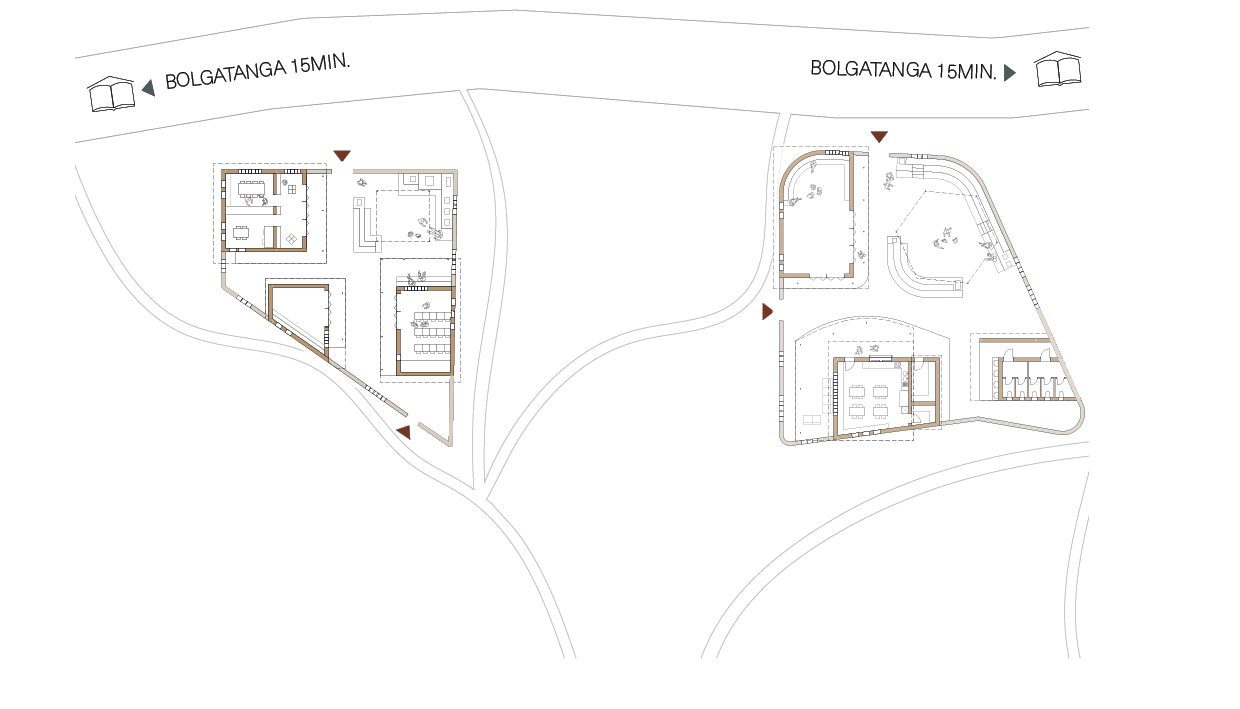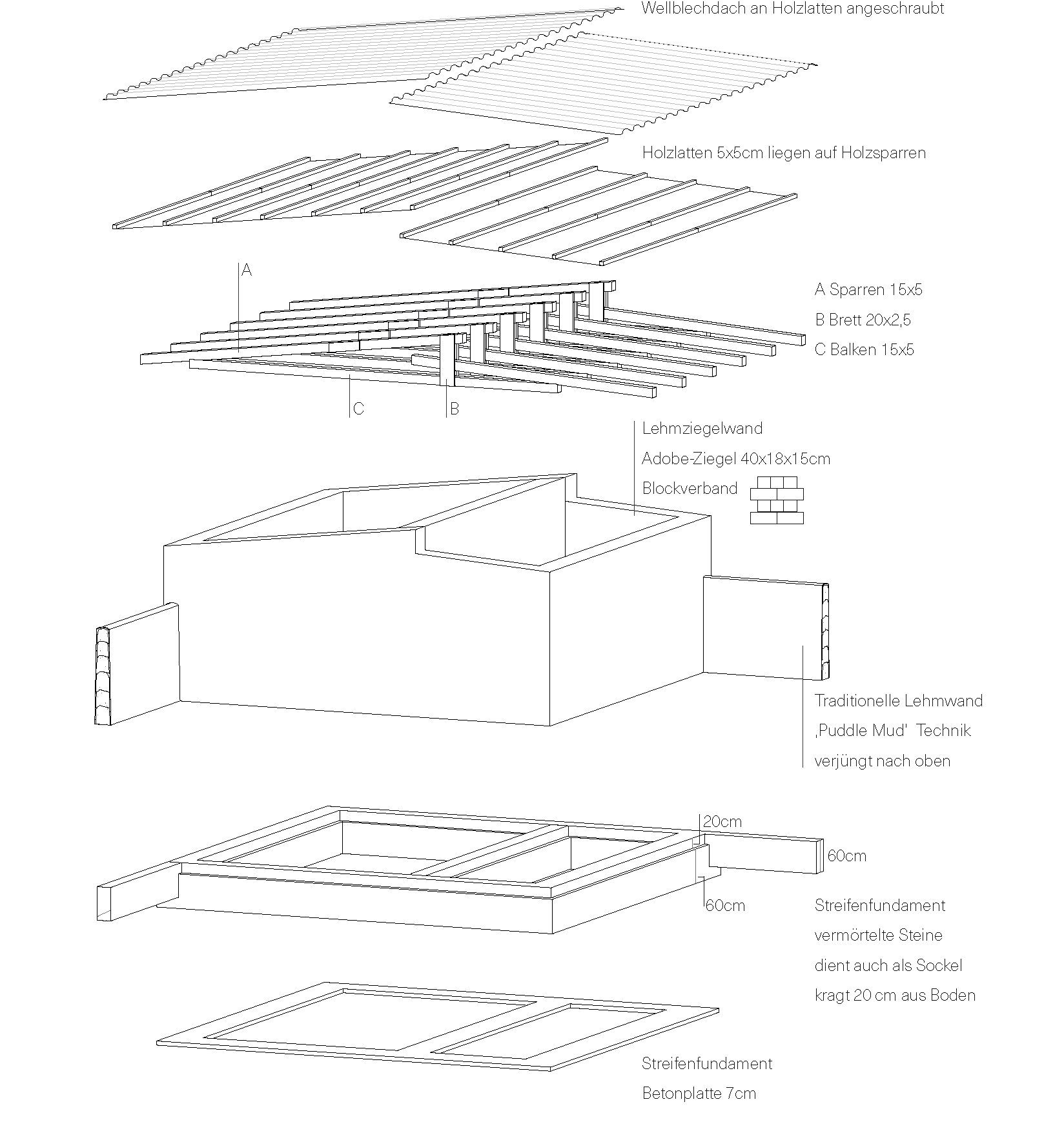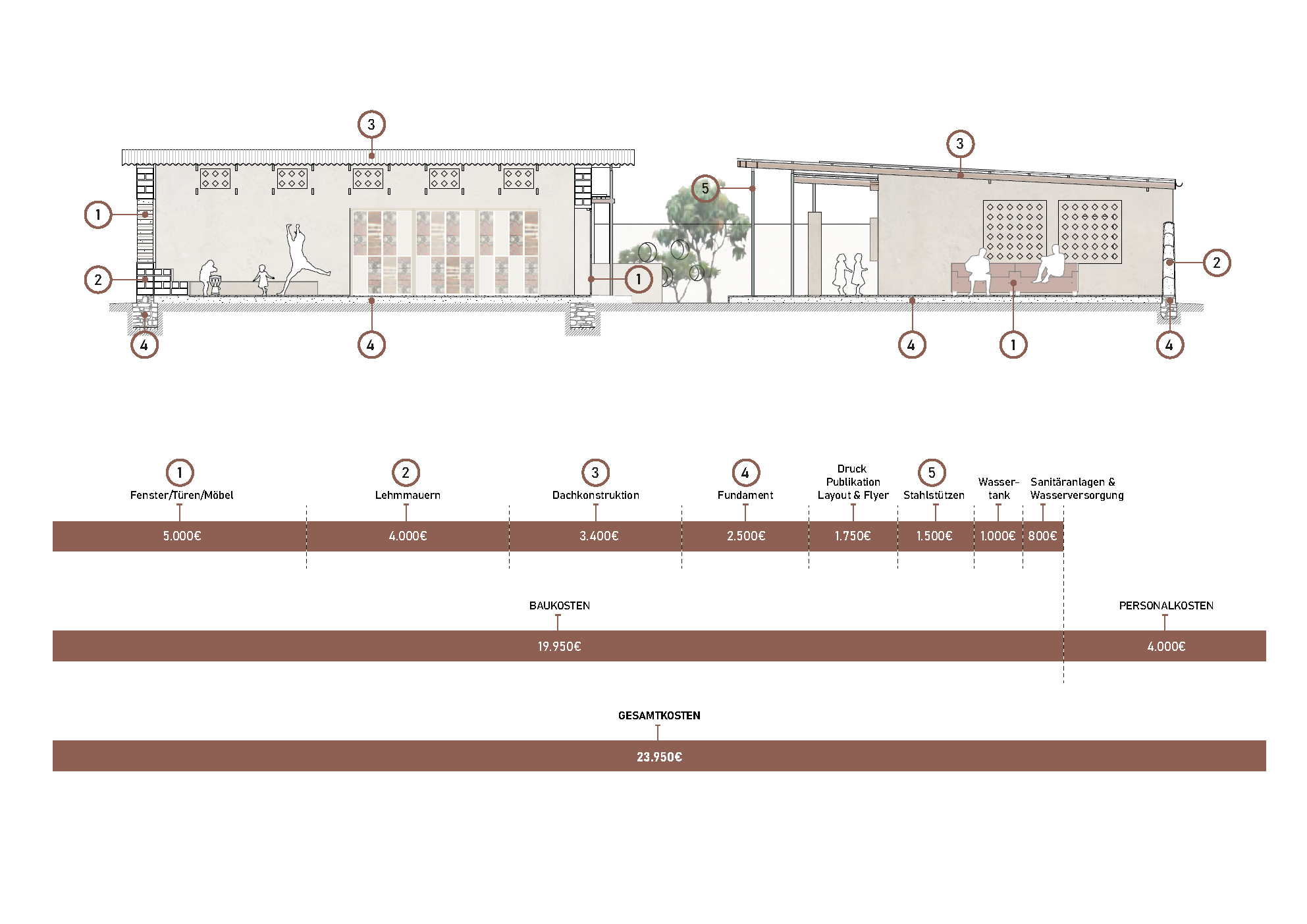nongre | cultural centre for kids in Ghana
our goal
The project objective of the Nongre Austria team is the construction of a cultural center in Bolgatanga, a city with about 80,000 inhabitants in the extreme north of Ghana, where children and young people are cared for after school. The organization NONGRE has been active in Bolgatanga for many years and manages to steer the future of children and young people in a positive direction with very few resources. Since a research stay of representatives of the Vienna University of Technology in Ghana, there is a long-standing relationship with this organization. After the organization's makeshift shelter collapsed during a storm a year ago, there is an urgent need to build a solid, secure roof over the heads of the children and young people. In the course of a diploma project, the plans for this were drawn up and are now being implemented. Two building compounds including annexes will be realized: The first compound consists of a learning center where children receive support with their homework and learning in order to reduce the high school dropout rate. The second compound represents the cultural center with an integrated craft area where children and youth learn practical skills (e.g., weaving baskets and mats) that increase their job opportunities and earning potential. The landscaped outdoor areas are used for recreational activities such as learning traditional dances and songs. At the same time, the areas likewise function as a stage for various cultural performances and are used by the entire community.

process
After school, the NONGRE kids are supported in learning and doing their homework by adult helpers from Bolgatanga or volunteers. Afterwards, they have time to let off steam by dancing, singing, playing games or drumming.
On weekends, the NONGRE children are at the centre and spend most of their time weaving baskets, dancing, singing, drumming and playing. Every now and then they study and do homework, if they have not finished it during the week or if an exam is coming up. At lunchtime, they cook together.
construction
Our project is the theoretical and, above all, practical examination of earthen building as such, as well as of the locally widespread, traditional building techniques. Part of the sustainable, resource-saving construction method is the use of the material excavated from the site. The excavated material is used in various areas and manufacturing processes. The natural raw material wood and a small amount of cement - for the water-stressed areas - as well as a covering in the form of corrugated iron are also necessary for the realisation. This is therefore a sustainable hybrid construction method.

construction costs

drawings by Constanze Walter